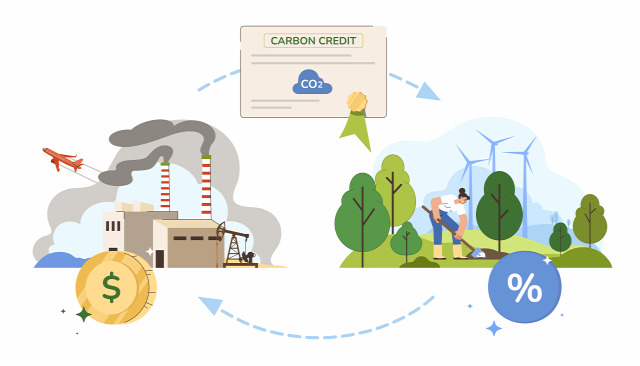
As the world grapples with the pressing challenges of climate change, the Carbon Credit Market has emerged as a crucial mechanism to mitigate greenhouse gas emissions and promote sustainable development. This market allows companies, governments, and organizations to buy and sell carbon credits, representing the reduction or removal of one metric ton of carbon dioxide equivalent (CO2e) from the atmosphere.
Understanding Carbon Credits
Carbon Credits are permits or certificates that allow the holder to emit a certain amount of carbon dioxide or other greenhouse gases. One credit typically equals one ton of CO2e. These credits are generated through various projects and activities that reduce, avoid, or remove greenhouse gas emissions, such as reforestation, renewable energy projects, and energy efficiency improvements.
According to BIS Research, the Global Carbon Credit Industry for agriculture, forestry, and land use was valued at $ 4,776.6 million in 2022, and $6,283.0 million in 2023, which is growing at a CAGR of 31.49% and will reach $ 97,100.4 million by 2033 during the forecast period 2023-2033.
The carbon credit market operates on two main types of markets:
Compliance Market: Driven by regulatory requirements, where companies and organizations must adhere to legally binding emission reduction targets. Examples include the European Union Emissions Trading System (EU ETS) and the California Cap-and-Trade Program.
Voluntary Market: Driven by organizations voluntarily offsetting their emissions to meet corporate social responsibility goals or enhance their sustainability credentials. These credits are often purchased by companies looking to achieve carbon neutrality.
Key Market Dynamics
Several factors are driving the growth of the carbon credit market:
Climate Change Mitigation: The urgent need to address climate change is pushing governments, organizations, and individuals to reduce their carbon footprints, fueling demand for carbon credits.
Regulatory Pressures: Stringent environmental regulations and policies are compelling companies to comply with emission reduction targets, driving the compliance carbon market.
Corporate Sustainability Goals: Companies are increasingly setting ambitious sustainability targets, including carbon neutrality and net-zero emissions, leading to a surge in demand for voluntary carbon credits.
Investor and Consumer Pressure: Investors and consumers are prioritizing environmental, social, and governance (ESG) criteria, prompting businesses to adopt more sustainable practices and offset their emissions.
Technological Advancements: Innovations in monitoring, reporting, and verification (MRV) technologies are enhancing the credibility and transparency of carbon credit projects.
Request for a FREE Sample Report (PDF) on Carbon Credit Market Research for Agriculture, Forestry, and Land Use.
Carbon Credit Industry Segmentation
Segmentation by Application:
• Removal Project
• Avoidance Project
• Combination Project
Segmentation by Project Type:
• Forestry and Land Use
o REDD+
o ARR
o IFM
• Agriculture
Segmentation by Credit Type:
• Voluntary Carbon Credits
• Compliance Carbon Credits
Segmentation by Region:
• North America
• Europe
• Asia-Pacific
• Rest-of-the-World
Market Challenges and Opportunities
Market Challenges:
• Verification and Monitoring
• Market Volatility
• Additionality and Permanence
• Access to Finance
Market Opportunities:
• Technological Innovation
• Integration with Sustainable Development Goals (SDGs)
• Expansion of Voluntary Markets
• Capacity Building and Education
Future Market Prospects
The future of the carbon credit market looks promising, with several trends likely to shape its trajectory:
Increased Market Integration: Closer integration of compliance and voluntary markets can enhance liquidity and efficiency.
Global Standards: The development of global standards for carbon credit projects can improve quality and credibility.
Expansion of Project Types: New and innovative project types, including nature-based solutions and technological carbon removal, will diversify the agriculture market.
Enhanced Corporate Reporting: Improved corporate reporting and transparency on carbon offsetting will drive market credibility and growth.
Conclusion
The global carbon credit market is poised for significant growth, driven by the urgent need to combat climate change, regulatory pressures, corporate sustainability goals, investor and consumer demands, and technological advancements. By addressing challenges related to market volatility, quality and credibility, regulatory uncertainty, and access and participation, and leveraging opportunities in technological innovation, corporate engagement, policy support, and sustainable development, the potential of the carbon credit market in fostering a sustainable future can be fully realized.

